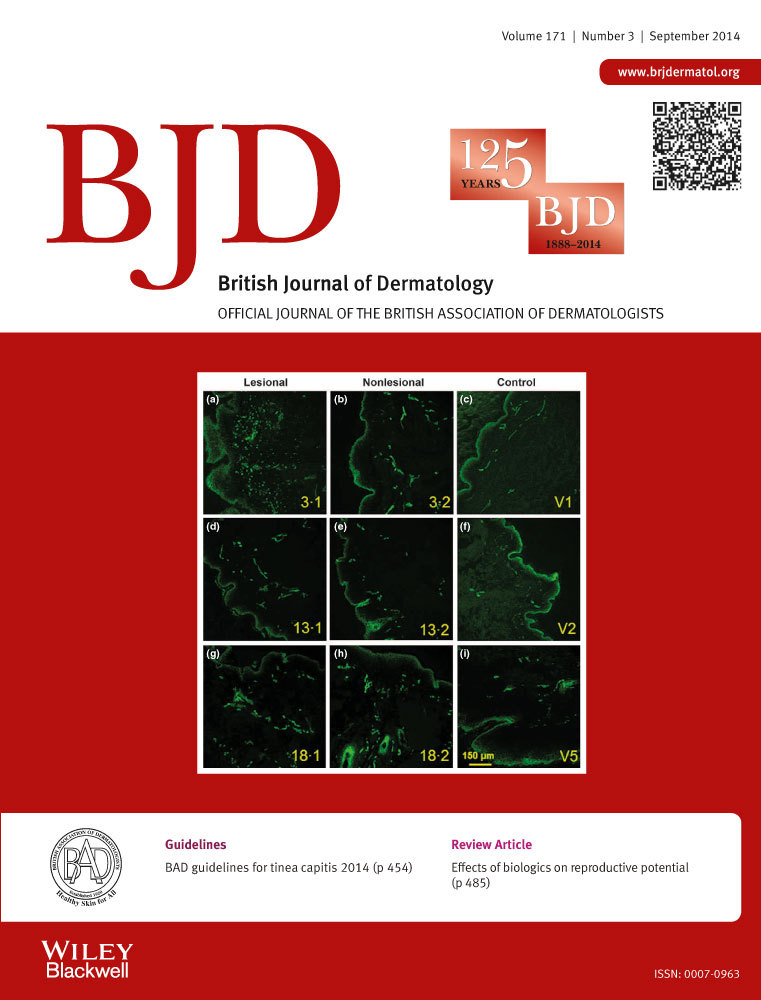Prevalence and incidence of hand eczema in adolescence: report from BAMSE – a population-based birth cohort
Summary
Background
BAMSE is a Swedish population-based birth cohort.
Objectives
To estimate prevalence proportions and the incidence rate of hand eczema in Swedish adolescents, and to compare information given by adolescents and parents. Further aims were to study sex distribution, age at onset and extension of hand eczema.
Methods
At 16 years of age, 2927 adolescents were included in this study; both adolescent and parental questionnaires were used, as well as clinical examination.
Results
The 1-year prevalence of hand eczema was 5·2% (n = 152) and 4·0% (n = 116) (P < 0·03), and lifetime prevalence was 9·7% (n = 284) and 7·0% (n = 206) (P < 0·01), respectively, when adolescents and parents reported. The incidence rate was 573/100 000 person-years according to the adolescent report. The level of agreement between adolescents and parents was fair for 1-year and lifetime prevalence (κ = 0·56 and κ = 0·49, respectively). According to the Hand Eczema Extent Score, 27·0% (n = 36) had moderate-to-severe hand eczema.
Conclusions
At the age of 16 years, the 1-year prevalence of hand eczema was substantial, with an incidence rate of the same magnitude as in adults. Female predominance was seen in adolescence. It is preferable that the occurrence of hand eczema is reported by adolescents themselves, as they are the ones most aware of their symptoms.




